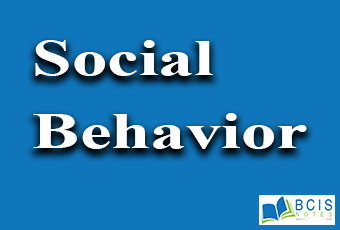
Social Behavior:
Social Behavior focuses on how an individual responds to their environment. While living together or people share or gain experiences and attempts to influence others’ behavior to adjust in that particular society. There are different ways through which people manipulate other’s behavior:
- Persuasion
- Attitudes
- Prejudice
1. Persuasion:
It is a process aimed to change a person’s behavior or attitude toward some extent, idea object or another person by using written or spoken words to convey information, feelings or a combination of them. The act of persuading, communication intended to induce belief pr action. The most important factors in the persuasion process can be explained through a question-” who says what to whom by what means? ” That means:
- Who- communicator
- What- message
- Whom- audience
- Means- Medium
The process of persuasion, the communicators use to change the people’s attitude or behavior are as follows:
- The credibility of the communicators
- Physical attraction
- Indirect messages
- Distractions
- Fitting the message to the audience
- The power of emotions
- Vocal power
2. Attitudes
A disposition or a tendency to respond positively or negatively towards a certain idea, object, person or situation is called attitudes. Types:
- Positive
- Negative
- Neutral
- Sikken
Ambivalence refers to the fact that our evaluations of objects, issues, people, events are not always uniformly positive or negative. Attitudes vary in intensity. It includes three components; Cognitive, Feeling and Behavior.
Development of Attitudes:
- Attitudes develop in the process of want satisfaction
- Attitudes are shaped by expressed information
- The Genetic factor
- Learning factor(Social, Classical conditioning, Instrumental conditioning)
3. Prejudice
Prejudice is not an inborn characteristic. It is a preconceived opinion that is not based on reason or actual experience.
Types:
- Racism
- Sexism
- Religious prejudice
- Nationalism
- Xenophobia(fear of strangers)
Causes of prejudice:
- Enhances self-esteem
- Saving effort
- Recent forms(Racial, Ethnic, Religious prejudice, and discrimination)
- Competition
- Role of learning and socialization practices
- Direct experience
- Role of medias
- Social Categorization(Dividing people into categories like; race, gender, age, etc)
Techniques to reduce prejudice:
- On learning not to hate
- Teaching tolerance
- Direct inter-group contact
- Re-categorization
- Cognitive interventions
You may also like Social Influence

Leave a Reply